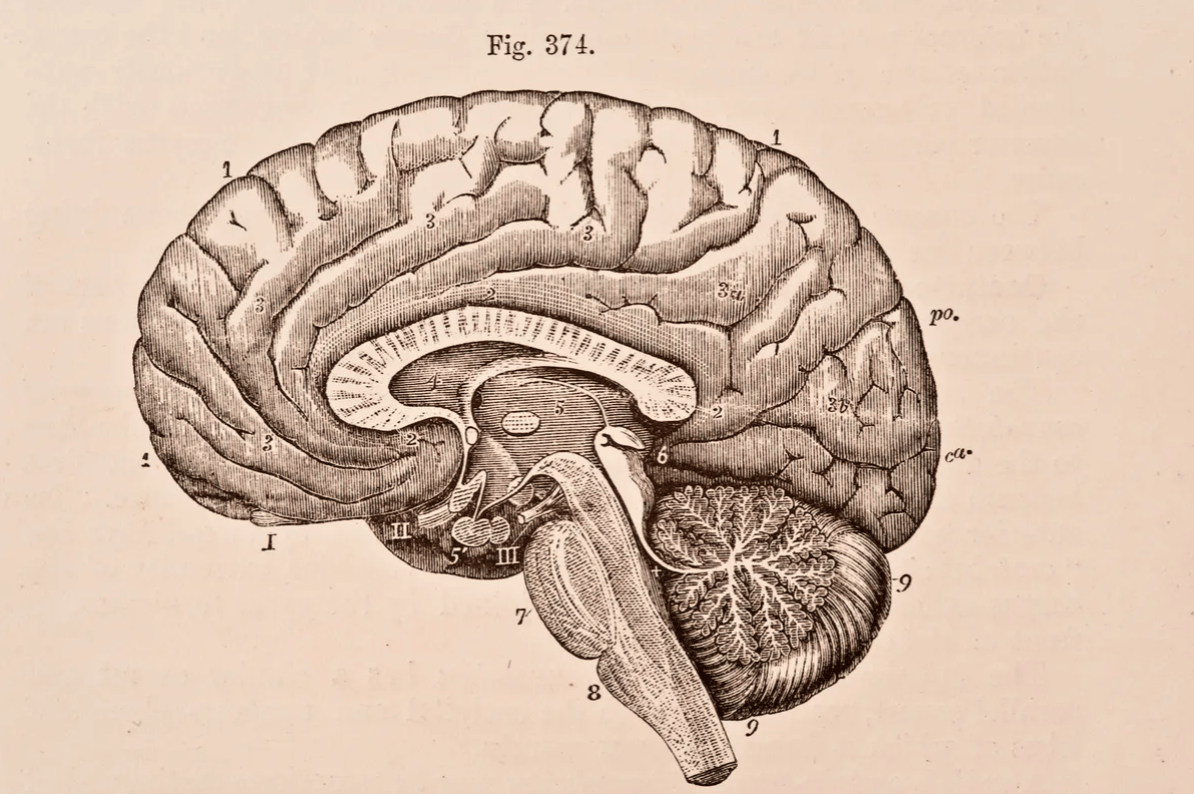THE FEMALE BRAIN
THE CAST OF NEURO-HORMONE CHARACTERS (in other words, how hormones affect a woman’s brain)
ESTROGEN—the queen: powerful, in control, all-consuming; sometimes all business, sometimes an aggressive seductress; friend of dopamine, serotonin, oxytocin, acetylcholine, and norepinephrine (the feel-good brain chemicals).
PROGESTERONE—in the background but a powerful sister to estrogen; intermittently appears and sometimes is a storm cloud reversing the effects of estrogen; other times is a mellowing agent.
TESTOSTERONE— fast, assertive, focused, all-consuming, masculine; forceful seducer; aggressive, unfeeling; has no time for cuddling.
OXYTOCIN—fluffy, purring kitty; cuddly, nurturing, earth mother; finds pleasure in helping and serving; sister to vasopressin (the male socializing hormone), sister to estrogen, friend of dopamine (another feel-good brain chemical).
CORTISOL—frizzled, frazzled, stressed out; highly sensitive, physically and emotionally draining.

NEUROSCIENCE AND BIOLOGY OF A FEMALE BRAIN
HORMONES CAN DETERMINE what the brain is interested in doing. They help guide nurturing, social, sexual, and aggressive behaviors. They can affect being talkative, being flirtatious, giving or attending parties, writing thank-you notes, planning children’s play dates, cuddling, grooming, worrying about hurting the feelings of others, being competitive, masturbating and initiating sex.
MORE THAN 99 percent of male and female genetic coding is exactly the same. Out of the thirty thousand genes in the human genome, there is less than 1% variation. But that percentage difference influences every single cell in our bodies—from the nerves that register pleasure and pain to the neurons that transmit perception, thoughts, feelings, and emotions.
Hormones During Puberty
The female brain is so deeply affected by hormones that their influence can be said to create a woman’s reality.
In all menstruating women, the female brain changes a little every day. Some parts of the brain change up to 25% every month.
READING EMOTION EQUALS READING REALITY
Just about the first thing the female brain compels a baby to do is study faces. There is a testosterone surge in utero that shrinks the centers for communication, observation, and processing of emotion in baby boys. Whereas over the first three months of life, a baby girl’s skills in eye contact and mutual facial gazing will increase by over 400%, and facial gazing skills in a boy during this time will not increase at all.
INFANTILE PUBERTY
Infantile puberty, is a period that lasts 9 months for boys and 24 months long for girls. During this time, the ovaries begin producing huge amounts of estrogen—comparable to the level of an adult female—that marinate the little girl’s brain.
Girls as young as a year old are more responsive to the distress of other people, especially those who look sad or hurt. It spurs the growth and development of neurons, further enhancing the female brain circuits and centers for observation, communication, gut feelings, even tending and caring. Estrogen is priming these innate female brain circuits so that this little girl can master her skills in social nuance and promote her fertility. That’s why she was able to be so emotionally adept while still in diapers.
INHERITING MORE THAN MOM’S GENES
Because of her ability to observe and feel emotional cues, a girl actually incorporates her mother’s nervous system into her own. If the mother is stressed throughout her pregnancy, the brain circuits of the baby will incorporate a fearful, anxious wiring. Additionally, the “nervous system environment” a girl absorbs during her first two years becomes a view of reality that will affect her for the rest of her life. Studies in mammals now show that this early stress versus calm incorporation—called epigenetic imprinting—can be passed down through several generations.
This isn’t about what’s learned cognitively—it’s about what is absorbed by the cellular microcircuitry at the neurological level. This may explain why some sisters can have amazingly different outlooks. It appears that boys may not incorporate so much of their mothers’ nervous system.
Neurological incorporation begins during pregnancy. Maternal stress during pregnancy has effects on the emotional and stress hormone reactions, particularly in female offspring.
NATURE VS NURTURE
The brain’s first organizing principle is clearly genes plus hormones, but we can’t ignore the further sculpting of the brain that results from our interactions with other people and with our environment. A parent’s or caregiver’s tone of voice, touch, and words help organize an infant’s brain and influence a child’s version of reality.
When you break down who you are to the biological level, you can see how to rebuild yourself up using the proper neurochemicals and hormones.
Over the next couple of months, I will be exploring the depths of the female brain and the male brain, compiling data, and seeing the interplay of hormones affects on our reality.
In order to manipulate your own body, you have to first learn the fundamental hardwiring and then re-engineer yourself for your future goals.